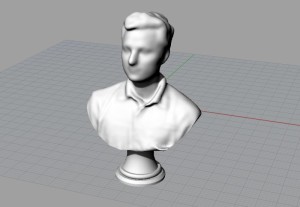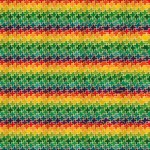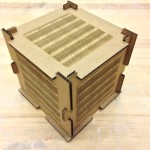What is it that we desire most when we are subject to being a member of the audience? We would like to be entertained on media that has the best fidelity, one that is made to give the best possible experience. If we study how the world is perceived by humans, we begin to realize that a 2-dimensional screen is hardly an accurate method to simulate the effect experienced by the human vision system when it is observing the real world. Why is 2D not enough? Put it simply: with a 2D display, we are missing nearly all of the visual cues our brains process to make meaning of the real world. What about “3D TVs”, you may ask? Hardly. 3D TVs simulate but one effect: stereopsis. This is the phenomenon by which we are able to determine how close or far an object is, the result of our evolutionary advantage for hunting. Stereopsis is a mere gimmick–to prove my point, imagine that you are looking out of a window. As you move your head left and right, does the vantage point of the objects outside the window change? Does your eye focus stay constant as you stare at one object and move to another, or does it change? 3D displays give you but one vantage point of a scene, with a fixed focus.
A volumetric display is a theoretical contraption that can display an object in a physical 3D space, so that a user can see that 3D object from any angle. Ideally, a volumetric display does not only account for stereopsis effect, but also can produce motion parallax, dynamic focusing, convergence/divergence of the eyes, etc. Now, before you get excited, I have by no means designed such a device. This problem is a tough nut to crack, and a dynamic volumetric display will likely not be a reality for some time to come.
What I propose is yet something simpler and the distillation of the concept of a volumetric display. I present to you the “Poor Man’s Volumetric Display”. Here is what goes into this contraption:
First, we start with a poor man (in this case, the poor man is me). We reconstruct him using a sophisticated, state-of-the-art 3D reconstruction algorithm and a depth-sensing camera. When we’ve got a mesh of the person, we can alter and tailor it to make a nice bust statue.
- Front View Depth Map
- Back View Depth Map
- Top View Depth Map
- Bottom View Depth Map
- Left View Depth Map
- Right View Depth Map
From the 3D object, we create 6 depth maps of each cube-side view of the object. These depth maps allow us to calculate disparity, from which we can create a stereo pair (left and right image view). The stereo pair allows us to create an autostereogram from these images, so that each of the 6 3D views can be printed on a flat sheet of paper, retaining the depth information. I first learned about autosteregrams when I was a kid, through the “Magic Eye” series of books. Autostereograms require the user to diverge the eyes in order to see a 3D object appear through the patterned image.
- Front View Autostereogram
- Back View Autostereogram
- Top View Autostereogram
- Bottom View Autostereogram
- Left View Autostereogram
- Right View Autostereogram

Kokopelli allows you to do some nifty stuff, like create a simple box.
These autostereograms serve a very important purpose–they are the 3D representation of the 6 sides of the Poor Man’s Volumetric Display. This contraption is actually a cardboard box with the autostereograms printed on each side, each representing one side of the 3D object. This design allows the user to see a 3D object from 6 angles, utilizing stereopsis effect to get the feeling that a 3D object is actually contained within the box!
To make the box, I started by looking at some example code from the kokopelli project, and made a 6″ press-fit box. Here are the results displayed below.
- The parts
- Putting it together…
- Perfect fit!
I couldn’t get the raster settings to work for etching an image onto the cardboard surface; I spent more than 3 hours banging my head against the wall but the raster images would just shred the cardboard and nothing was visible. So I thought for the first version, I could just make color prints of the autostereograms and paste them on the side of the box.
- Printed out all 6 autostereograms
- Glued them on one by one
- Best 1st grade project ever
Eventually, I got the impetus to try to etch the autostereograms onto the cardboard again. After speaking with a TA, NovySan, he gave me some good advice on doing raster image on the cardboard:
- Cardboard is extremely thin material, and so raster etching is really difficult to do.
- Must run the laser at the fastest speed (up to 100%)
- Must set the resolution to highest setting (1200 DPI)
- Experiment with extremely low levels of power for the laser, increase by 2-5% each time.
Eventually, I came across to these settings:
- Speed: 90%
- Power: 18%
- Quality: 1200DPI
- Rasterizing algorithm: Stucki
- Here you can see the autostereogram pattern
- Putting it all together
- Done!
And here we have it. The Poor Man’s Volumetric Display.
What are the uses? I imagine it would make a nifty office toy, children’s toy, or a great gag gift.























